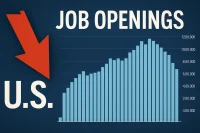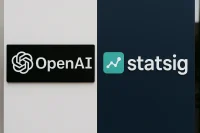In one of the most unusual workforce experiments in U.S. history, more than 154,000 federal employees this year accepted an offer to resign—while still drawing full pay for up to 12 months.
Branded the Federal Deferred Resignation Program (FDRP), the initiative was designed as a budget tool to streamline the federal workforce without immediate layoffs.
But the fallout is now becoming clear. With so many workers effectively on payroll but inactive, agencies are struggling with productivity shortfalls, while hiring freezes have disrupted recruitment pipelines. The program, initially hailed as a “win-win” for trimming costs, is exposing gaps in planning, morale, and workforce continuity.
Table of Contents
What Is the Deferred Resignation Program?
Launched in early 2025, the program offered eligible federal employees:
- Full salary for up to 12 months while inactive.
- Benefits continuation, including healthcare and pensions.
- Guaranteed separation at the end of the period, with no chance of reemployment in the same role.
The government framed it as a way to:
- Reduce headcount gradually without politically explosive layoffs.
- Free up long-term budget capacity by encouraging older employees to exit.
- Avoid morale damage from sudden job cuts.
Unintended Consequences
While the program achieved buy-in, it has also created serious challenges:
- Hiring Gridlock
Agencies cannot immediately backfill roles because workers remain “on the books.” Recruitment pipelines are frozen, leaving critical vacancies unfilled. - Productivity Losses
With tens of thousands inactive, workloads have shifted unevenly. Remaining staff are overburdened, leading to burnout. - Morale Erosion
Employees left behind question why colleagues are being paid not to work, undermining confidence in leadership. - Training Disruptions
Federal programs that rely on mentorship and knowledge transfer are strained, as many of those exiting early were senior employees.
Break Free from Hiring Gridlock
Frozen pipelines, rising burnout, and disrupted training are crippling workforce efficiency. It’s time to unlock smarter hiring strategies and restore balance across your teams.
Post a Job Now →Impact Across Agencies
- Defense: Civilian roles supporting logistics and IT have gaps, slowing modernization projects.
- IRS: Tax processing delays are mounting, with fewer staff during peak filing periods.
- Education & Health: Programs serving vulnerable communities face continuity issues, with staff turnover disrupting services.
The ripple effects are visible across nearly every federal agency.
Political Reactions
- Supporters (mostly budget hawks): Argue the program will save billions long-term and modernize the federal workforce.
- Critics (labor unions and some lawmakers): Say it’s a hidden layoff program that sacrifices effectiveness for short-term savings.
One union leader put it bluntly: “This isn’t restructuring. It’s hollowing out the federal government from within.”
Implications for Recruitment
The FDRP has upended federal hiring strategies:
- Freeze on New Roles: Until deferred resignations are complete, agencies face strict caps.
- Delayed Onboarding: Candidates stuck in pipelines are left in limbo for months.
- Shift to Contractors: Many agencies are plugging holes with private contractors, often at higher cost.
- Lost Talent: Younger workers are turned away from federal service opportunities at a time when the government desperately needs tech and policy talent.
Worker Sentiment
- “I applied for a policy role, was told I got it, and then learned I can’t start until 2026.” – Graduate applicant, Department of Labor.
- “We’re down three analysts. I’m doing the work of five people because half our office took the program.” – Current Treasury employee.
- “This was supposed to be an honorable exit. Instead, it feels like the government is paying people to disappear.” – Retiring civil servant.
FAQs
Q1: Why did the government launch the Federal Deferred Resignation program?
The Federal Deferred Resignation program was introduced to address immediate staffing disruptions and allow agencies more time to adapt. By keeping departing employees “on the books” temporarily, leadership aimed to slow down mass vacancies, protect critical operations, and prevent a sudden knowledge drain — especially among senior staff nearing retirement.
Q2: Why can’t agencies hire replacements immediately?
Because employees remain on payroll until their deferred resignation takes effect, budget allocations for their roles remain “locked.”
Q3: How does this affect services?
Critical functions—like tax processing, defense support, and education programs—are facing delays and staffing shortages.
Q4: Will the program continue?
Officials say it may be extended, but backlash from unions and agencies makes expansion politically risky.
IRS Backlogs
The Internal Revenue Service (IRS) provides a stark example of the program’s ripple effects.
- Roughly 7,000 employees at the IRS opted into deferred resignation.
- While they remain on payroll, they are inactive, leaving teams stretched thin.
- As a result, tax refund processing times have ballooned—average wait times are now 8 weeks, compared to 4 weeks last year.
- To cope, the IRS has turned to contractors and overtime pay, ironically increasing short-term costs despite the program’s savings goals.
This illustrates the program’s paradox: designed to save money and streamline, it is creating new inefficiencies and costs in the short term.




